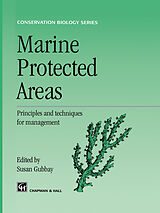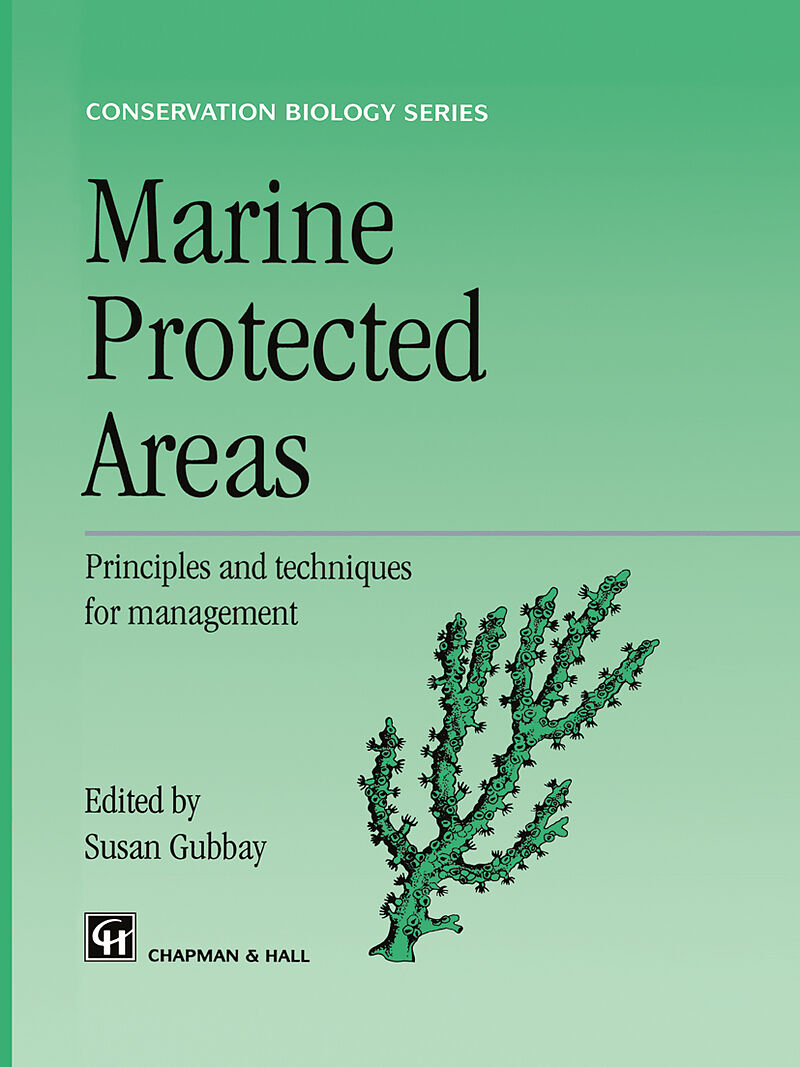Marine Protected Areas
Einband:
Fester Einband
EAN:
9780412594502
Untertitel:
Principles and techniques for management
Herausgeber:
Springer Netherlands
Auflage:
1995
Anzahl Seiten:
256
Erscheinungsdatum:
31.07.1995
ISBN:
0412594501
Marine protected areas (MPAs) have an important role in marine conserva tion programmes around the world. Although most have been established relatively recently when compared with protected areas on land, there is considerable expertise on their identification, setting up and management. Some techniques have been adapted from those used on land. Others are novel, and unique to marine conservation. The chapters in this book give an insight into this fast developing field where experiment and innovation work alongside techniques which have been tried and tested. The guiding princi ples behind key stages in the setting up and management of MP As are described, and case studies illustrate how they have worked. While it is most encouraging to read about the successes, the case studies also point to difficulties which have been encountered. Not all of the examples are new or recent but, together, they illustrate what is happening in this field.
Klappentext
Marine protected areas (MPAs) have an important role in marine conserva tion programmes around the world. Although most have been established relatively recently when compared with protected areas on land, there is considerable expertise on their identification, setting up and management. Some techniques have been adapted from those used on land. Others are novel, and unique to marine conservation. The chapters in this book give an insight into this fast developing field where experiment and innovation work alongside techniques which have been tried and tested. The guiding princi ples behind key stages in the setting up and management of MP As are described, and case studies illustrate how they have worked. While it is most encouraging to read about the successes, the case studies also point to difficulties which have been encountered. Not all of the examples are new or recent but, together, they illustrate what is happening in this field.
Zusammenfassung
There is a rapidly growing body of literature on MPAs, filling a long felt gap, and this is a particularly practical addition - Reef Encounter; The contributors have a wealth of knowledge and experience in the subject, and inlcude those who have written earlier practical guides on the subject. This, effective editing, and good cross-referencing among chapters, leads to a tight focus throughout the book ...Those involved in the day-to-day trials of trying to make marine protected area programmes work, now and in the future, will benefit from the collected wisdom of those with the experience of how to do just that. - Biological Conservation; a useful and timely set of guidelines and examples for anyone who is likely to be affected by MPAs - in other words all marine scientists. - Journal of Experimental Marine Biology and Ecology; This excellent selection of papers covers every facet of marine protected areas (MPAs), from identifiction of sites, through management techniques and tools, to enforcement. - Biologist; This book describes the selection, setting up and techniques for management of marine protected sites internationally. Principles are supported by practical case studies drawn from the main marine regions of the world - Ethology Ecology & Evolution
Inhalt
1 Marine protected areas past, present and future.- 1.1 A historical perspective.- 1.2 Types of marine protected areas.- 1.3 The management of MPAs.- 1.4 Future prospects for the development of MPAs.- 1.5 Conclusions.- References.- 2 Selection of marine protected areas.- 2.1 Guiding principles for the selection of marine protected areas.- 2.2 The site selection process.- 2.3 Criteria for the selection of marine protected areas.- 2.4 Two case studies on site selection.- References.- 3 Legislative requirements.- 3.1 The legal framework.- 3.2 Implementation a case study of the United Kingdom marine nature reserves programme.- References.- 4 Involving the community.- 4.1 Introduction.- 4.2 Why community involvement.- 4.3 Who is the community.- 4.4 Levels of community involvement.- 4.5 How to involve the community.- 4.6 Case study Balicasag Island Municipal Marine Park.- 4.7 Conclusions.- References.- 5 Making a management plan.- 5.1 Introduction.- 5.2 Defining the objectives of management.- 5.3 Techniques available to managers.- 5.4 Assembling a management plan.- 5.5 Preparing for management.- References.- 6 Techniques for managing marine protected areas: zoning.- 6.1 Introduction.- 6.2 Zoning schemes.- 6.3 The basis for zoning.- 6.4 The format of a zoning scheme.- 6.5 Objectives of zoning.- 6.6 Development and implementation of zoning schemes.- 6.7 Case studies.- 6.8 Conclusions.- References.- 7 Enforcement in marine protected areas.- 7.1 Need for enforcement.- 7.2 Enforcement in United States national marine sanctuaries.- 7.3 Key Largo and Looe Key National Marine Sanctuaries: a case study of enforcement in marine protected areas.- 7.4 Looe Key National Marine Sanctuary: 10-year development of a law enforcement programme.- 7.5 Conclusions.- Acknowledgements.-Appendix 7.A Key Largo Marine Sanctuary: final regulations (15 CFR-Part 929).- Appendix 7.B Looe Key National Marine Sanctuary: final regulations (15 CFR-Part 937).- References.- 8 Caring for sea country accommodating indigenous peoples' interests in marine protected areas.- 8.1 Introduction.- 8.2 The Great Barrier Reef Marine Park.- 8.3 Indigenous peoples of the Marine Park.- 8.4 Contemporary Aboriginal and Islander interests in the Great Barrier Reef Marine Park.- 8.5 The Mabo case.- 8.6 Aboriginal and Islander involvement in the GBRMP.- 8.7 Assessment of Aboriginal and Islander involvement.- 8.8 Resolving Aboriginal and Islander interests in the GBRMP.- 8.9 Implications for other marine protected areas.- References.- 9 Marine education and interpretation.- 9.1 Designing an education plan.- 9.2 Keys to a successful strategy.- 9.3 Education techniques.- 9.4 Models for marine education.- 9.5 Conclusions.- References.- 10 The voluntary approach to conservation of marine areas.- 10.1 The voluntary approach.- 10.2 Suitable sites for voluntary conservation.- 10.3 Establishing a voluntary marine conservation area.- 10.4 Managing VMCAs.- 10.5 Evaluating the success of VMCAs.- 10.6 The UK experience with voluntary marine conservation.- 10.7 The Purbeck Marine Wildlife Reserve: a case study.- 10.8 Conclusions.- Appendix 10.A Seashore and underwater codes.- References.

Leider konnten wir für diesen Artikel keine Preise ermitteln ...
billigbuch.ch sucht jetzt für Sie die besten Angebote ...
Die aktuellen Verkaufspreise von 6 Onlineshops werden in Realtime abgefragt.
Sie können das gewünschte Produkt anschliessend direkt beim Anbieter Ihrer Wahl bestellen.
Loading...
Die aktuellen Verkaufspreise von 6 Onlineshops werden in Realtime abgefragt.
Sie können das gewünschte Produkt anschliessend direkt beim Anbieter Ihrer Wahl bestellen.
| # | Onlineshop | Preis CHF | Versand CHF | Total CHF | ||
|---|---|---|---|---|---|---|
| 1 | Seller | 0.00 | 0.00 | 0.00 |
